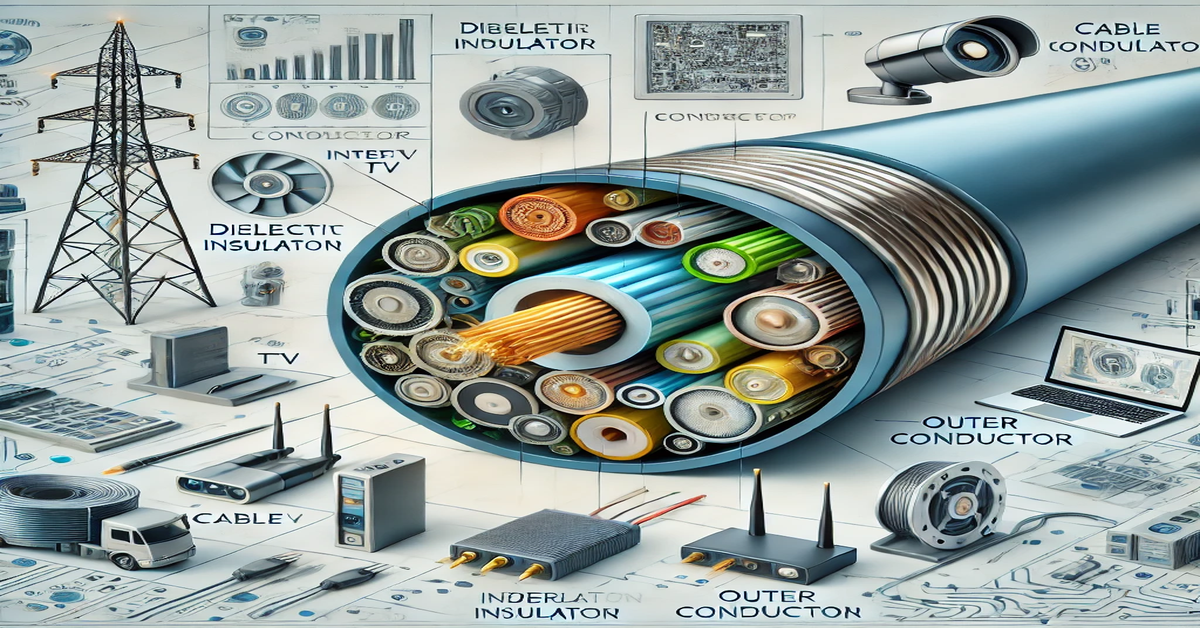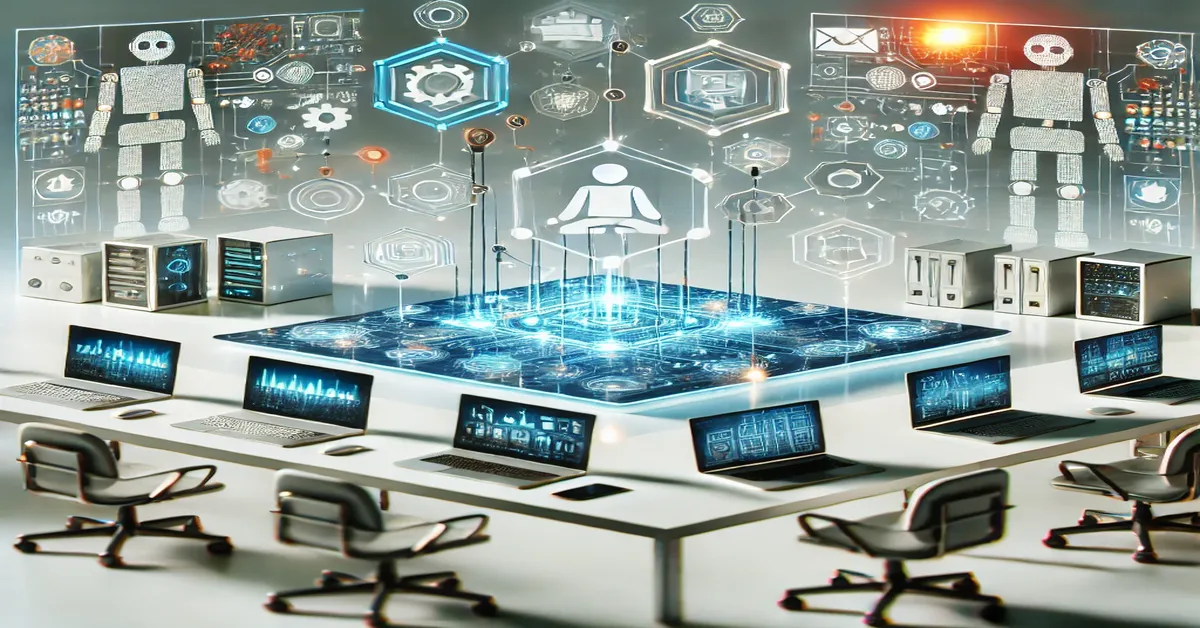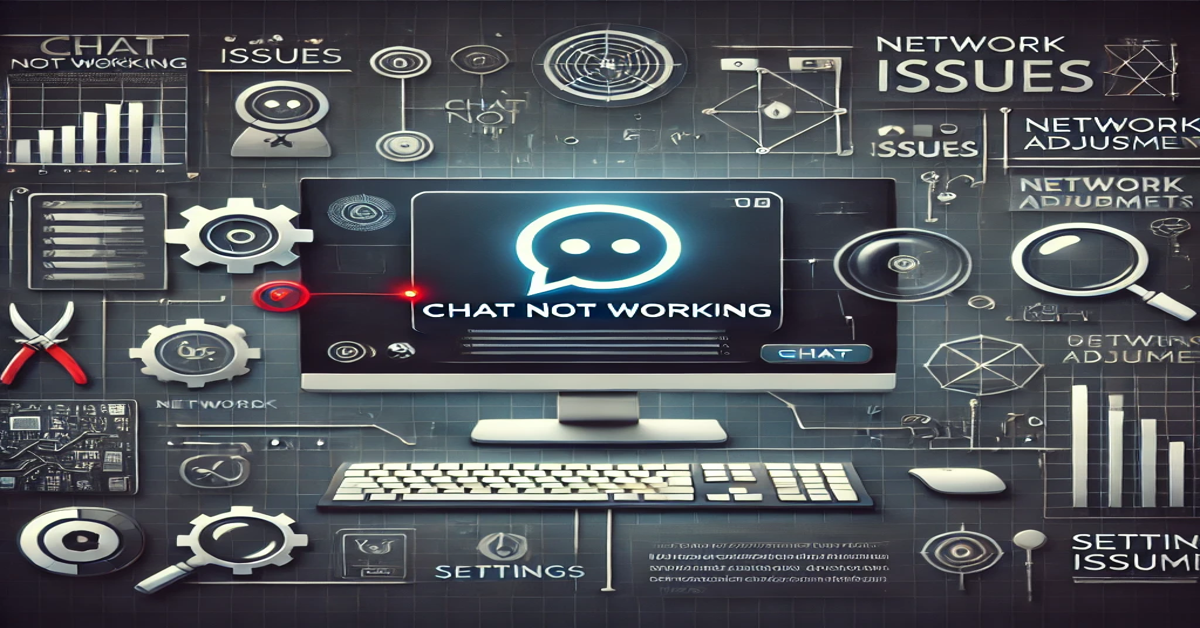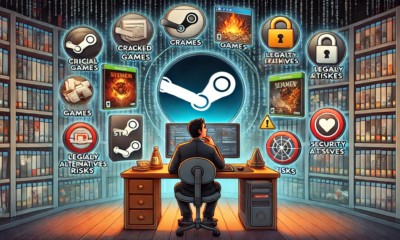Technology
Strands hints: Explained Unlocking Hidden Insights

The term “strands hints” may seem ambiguous at first glance, but when analyzed across various fields, it unveils a profound connection to the way information is structured, transmitted, and understood. Whether discussing biology, hair care, data analysis, or even storytelling, the idea of “strands” can represent interconnected elements, and “hints” often allude to small pieces of information that offer valuable clues to a larger whole.
This article aims to explore how strands and hints work together to convey meaningful information across multiple domains, providing examples, applications, and insights into their importance in understanding complex systems. The different interpretations of the term “strands hints” will be analyzed and discussed, offering a comprehensive understanding of the topic.
What are Strands?
Before diving into the concept of “strands hints,” it is essential to first understand what “strands” mean in various contexts. A strand can be defined as a thin length of material, typically twisted, woven, or braided together with others. In biological terms, strands refer to molecules, such as DNA or RNA, where each individual strand carries genetic information vital for cellular functions. In other contexts, strands can also refer to ideas or themes within a narrative or the structural components of complex data.
1. Biological Strands
In the context of biology, particularly genetics, strands are crucial components in the structure of nucleic acids. DNA and RNA are both made up of long chains of nucleotides, and these chains are referred to as strands. The structure of DNA consists of two complementary strands that coil around each other, forming the famous double helix. These strands hold the genetic code and convey information that dictates the development, functioning, and reproduction of all living organisms.
The hints provided by the genetic strands can be seen in the sequence of nucleotides that provide clues to an organism’s traits, health conditions, and other biological attributes. By examining these “strands” of genetic material, scientists can derive hints about an individual’s genetic makeup, predispositions, and inherited traits.
2. Strands in Technology and Data
In the world of technology and data analysis, the concept of strands can be used metaphorically to describe the various threads of information within a larger system. For instance, in computer science, data strands might represent isolated sets of data points that provide hints or insights when examined individually or as part of a larger dataset. Much like the strands in a rope, these pieces of data often connect and interact to create a coherent understanding of a situation or solve a particular problem.
Strands in technology can also refer to processes, algorithms, or even pieces of code within a software system. These strands might offer hints about the logic of an application or the behavior of a machine learning algorithm. The analysis of individual strands of data can provide valuable insights into trends, patterns, and other crucial information that drive decision-making processes in modern technology.
3. Strands in Literature and Storytelling
In literature and storytelling, the concept of strands is frequently used to describe multiple threads of narrative that are interwoven to form a complete story. A story may have various “strands” — themes, characters, or plot points — each providing hints and insights into the larger narrative. The skillful intertwining of these strands keeps readers engaged, allowing them to uncover hidden layers of meaning as they progress through the story.
A great example of strands in storytelling is in the works of authors such as William Faulkner, who often interweaves various narratives and perspectives to provide a multifaceted view of a particular event or experience. Each strand offers a hint or clue to understanding the broader themes of the story, leading to a deeper exploration of its central ideas.
The Role of Hints in Conveying Information
The term “hint” refers to a subtle piece of information that suggests a larger, hidden idea. In all of the aforementioned contexts—biology, technology, and literature—hints are crucial to deciphering meaning and uncovering the truth. Whether it’s a hint embedded within genetic material, data, or a storyline, these small pieces of information serve as clues that help individuals make sense of more complex systems.
1. Genetic Hints: Decoding DNA
In genetics, a “hint” can refer to a piece of information within a strand of DNA or RNA that offers insight into an organism’s biological makeup. By analyzing specific sequences of nucleotides, scientists can decode information that suggests an individual’s genetic predispositions, susceptibility to diseases, and other traits. Genetic testing is one of the primary ways in which hints from biological strands are utilized, offering individuals valuable information about their ancestry and health.
For example, geneticists use hints from strands of DNA to identify mutations associated with diseases such as cystic fibrosis, breast cancer, and even conditions like Alzheimer’s disease. These hints often manifest in very specific patterns within the genetic code, and through the careful study of these patterns, scientists can provide early diagnosis or predictions about future health risks.
2. Data Analysis: Extracting Meaning from Strands of Information
In the field of data analysis, hints often come in the form of correlations, anomalies, or patterns within large datasets. Each “strand” of data might seem insignificant on its own, but when combined with other strands, it can reveal valuable insights. A well-trained data analyst or machine learning algorithm can extract these hints to generate predictions, forecasts, or recommendations.
For example, in retail, customer behavior is tracked across different touchpoints, and analysts may extract hints from various strands of data (e.g., purchase history, location, and browsing habits). These hints can then be used to inform marketing strategies, improve customer service, and enhance product offerings. The more data strands are analyzed, the clearer the hint becomes in predicting customer behavior.
3. Literary Hints: Unraveling the Mystery
In literature, hints are often used by authors to create suspense and guide readers toward a deeper understanding of the plot. A well-crafted story will provide subtle clues, or “hints,” that foreshadow major events or reveal hidden truths. These hints may be woven into the dialogue, descriptions, or actions of characters, and they encourage readers to engage with the narrative on a deeper level.
In detective fiction, for example, the “hints” are often small pieces of information that lead the reader toward solving a mystery before the detective does. The skillful use of these narrative strands keeps the audience intrigued, building tension and anticipation.
The Interplay Between Strands and Hints
When we combine strands and hints, we unlock a new way of thinking about complex systems, whether in biology, technology, or literature. In many cases, strands represent isolated elements that, when put together, create a fuller picture. Hints, on the other hand, provide insights into these strands, offering subtle clues that help us make sense of what might otherwise be overwhelming or opaque.
In genetics, for instance, the individual strands of DNA hold valuable hints about an individual’s traits, predispositions, and health conditions. The ability to read and interpret these strands enables scientists to offer insights into everything from inherited diseases to personalized medicine.
In technology, data strands might seem unimportant individually, but hints in the form of patterns or correlations can lead to groundbreaking discoveries. In this way, the strands provide the raw material, while the hints offer the direction for action.
Likewise, in storytelling, the strands of plot and character development carry hints that guide readers toward a greater understanding of the work. The careful interplay of these elements is what makes storytelling a dynamic and immersive experience.
Conclusion
“Strands hints” is a multifaceted concept that spans a variety of fields and contexts. Whether we are exploring the intricate structure of DNA, analyzing data patterns, or unraveling a complex narrative, the combination of strands and hints plays a crucial role in how information is conveyed, understood, and applied. In biology, these elements allow us to decode genetic information; in data science, they help us extract meaningful insights; and in literature, they guide us toward deeper understanding and enjoyment.
In each of these domains, the relationship between strands and hints serves to simplify complex systems, providing clarity and insight where none existed before. Whether you’re a geneticist interpreting DNA, a data analyst making sense of numbers, or a reader uncovering the layers of a story, understanding how strands and hints work together is essential to making informed decisions and discoveries.
FAQs
1. What are genetic strands and how do they relate to hints?
Genetic strands refer to the individual chains of nucleotides that make up DNA and RNA. These strands carry the genetic information that determines an organism’s traits. The “hints” are subtle clues within the sequence of nucleotides that can indicate genetic predispositions, health risks, or ancestral origins.
2. How are strands used in data analysis?
In data analysis, strands refer to individual data points or sets of information. These strands can offer hints or clues about patterns, trends, or anomalies within larger datasets. By analyzing these strands, data scientists can draw conclusions, make predictions, and uncover valuable insights.
3. How do hints enhance storytelling?
In literature, hints are used to foreshadow events or reveal underlying themes in a story. These small pieces of information, or clues, encourage readers to think critically and engage with the narrative, creating a deeper connection with the plot and characters.
4. Can strands be used in machine learning?
Yes, in machine learning, strands refer to pieces of data that can be analyzed to extract meaningful patterns or insights. These data points may provide hints that guide the algorithm toward more accurate predictions or classifications.
5. What is the role of hints in problem-solving?
Hints are essential in problem-solving because they provide subtle clues or insights that can guide individuals toward a solution. Whether in genetic research, data analysis, or complex decision-making, hints help simplify complex problems and direct attention to key information.
6. How can we interpret strands and hints in daily life?
In everyday life, we can interpret strands and hints by paying attention to the small pieces of information that we encounter daily. These could be signs or clues that help us make decisions, solve problems, or understand people and situations more clearly. The key is to recognize how these pieces fit together to reveal a larger truth or understanding.
Technology
Coax: An In-depth Guide to Coaxial Cables and Their Applications

Coaxial cables, commonly referred to as “coax,” are an essential component of modern communication systems. From delivering cable television signals to enabling high-speed internet, coaxial cables have revolutionized how data and signals are transmitted. This article dives deep into the world of coaxial cables, covering their structure, functionality, uses, benefits, limitations, and the future of this technology. By the end, you will have a comprehensive understanding of why coax cables remain relevant despite advancements in fiber-optic and wireless technologies.
Understanding Coaxial Cables
Coax cables are specialized cables designed for transmitting high-frequency electrical signals with minimal loss. Their unique design helps shield the transmitted signals from electromagnetic interference (EMI), ensuring clear and reliable communication. The term “coax” is derived from the cable’s geometry, where the central conductor and the outer conductive layer share a common axis.
Structure of Coaxial Cables
Coaxial cables have a distinct multi-layered structure, optimized for signal transmission:
- Inner Conductor:
- The core component of the cable, typically made of copper or copper-clad steel.
- Responsible for carrying the electrical signal.
- Dielectric Insulator:
- Surrounds the inner conductor and separates it from the outer conductor.
- Made of materials like polyethylene or Teflon, which ensure minimal signal loss.
- Outer Conductor (Shield):
- A braided or solid metallic layer, often made of aluminum or copper.
- Protects the inner conductor from external electromagnetic interference.
- Outer Jacket:
- The final protective layer, made of PVC or other durable plastics.
- Shields the cable from physical damage, moisture, and environmental factors.
How Coaxial Cables Work
Coax cables work by transmitting signals through the inner conductor, while the outer conductor acts as a shield against interference. The dielectric insulator maintains a uniform distance between the two conductors, ensuring consistent signal quality. This design allows coaxial cables to carry high-frequency signals over long distances with minimal degradation.
Types of Coaxial Cables
There are various types of coax cables, each designed for specific applications. Some of the most common types include:
- RG-6:
- Widely used for cable television, satellite, and internet services.
- Offers low signal loss and superior shielding.
- RG-59:
- Common in CCTV systems and short-distance video applications.
- Less effective for high-frequency signals over long distances.
- RG-11:
- Used for long-distance signal transmission.
- Features thicker conductors and better shielding.
- Hardline Coaxial Cables:
- Designed for high-power applications, such as radio transmitters and cellular networks.
- Equipped with rigid outer conductors for enhanced durability.
- Tri-axial (Triax) Cables:
- Include an additional layer of shielding.
- Used in professional video applications to reduce interference.
- Semi-Rigid Coaxial Cables:
- Feature a solid metal outer jacket.
- Ideal for military and aerospace applications.
Applications of Coaxial Cables
Coax cables are versatile and find use across various industries. Some of their most prominent applications include:
1. Television Broadcasting
Coaxial cables have been the backbone of cable television systems for decades. They efficiently deliver high-quality audio and video signals from broadcasting stations to homes, ensuring minimal loss and interference.
2. Internet Connectivity
Cable internet providers rely on coaxial cables to transmit data. Coaxial cables support broadband connections and enable high-speed internet access, making them integral to modern communication networks.
3. CCTV and Security Systems
In surveillance systems, coaxial cables are used to connect cameras to recording devices and monitors. Their ability to transmit high-resolution video signals over long distances makes them a preferred choice for CCTV installations.
4. Telecommunications
Coaxial cables play a critical role in telephone networks and other telecommunications systems, enabling reliable voice and data transmission.
5. Military and Aerospace
Due to their durability and ability to shield against interference, coaxial cables are used in military and aerospace applications for radar systems, navigation equipment, and secure communication lines.
6. Medical Equipment
In the medical field, coaxial cables are used in imaging systems like MRI and CT scanners, where signal integrity is crucial.
7. Amateur Radio and Broadcasting
Radio enthusiasts and broadcasters use coaxial cables to connect antennas, transmitters, and receivers, ensuring optimal signal performance.
Advantages of Coaxial Cables
Coaxial cables offer several benefits that contribute to their widespread use:
- High Bandwidth:
- Capable of transmitting large amounts of data at high speeds.
- Signal Integrity:
- Provides excellent shielding against EMI, ensuring clear and reliable signal transmission.
- Durability:
- Resistant to environmental factors, physical damage, and wear and tear.
- Cost-Effectiveness:
- More affordable than fiber-optic cables for certain applications.
- Ease of Installation:
- Simple to install and maintain, with readily available connectors and tools.
- Compatibility:
- Supports a wide range of devices and systems, from televisions to internet modems.
Limitations of Coaxial Cables
Despite their advantages, coaxial cables have some limitations:
- Signal Loss:
- Over long distances, coaxial cables can experience signal attenuation, requiring signal boosters or amplifiers.
- Bulkiness:
- Thicker and less flexible than some modern alternatives like twisted-pair cables.
- Limited Scalability:
- May struggle to meet the demands of high-speed data transmission compared to fiber optics.
- Vulnerability to Moisture:
- If not properly sealed, coaxial cables can be damaged by moisture ingress, leading to signal degradation.
- Interference in Poor Quality Cables:
- Low-quality coaxial cables may not provide adequate shielding, resulting in EMI issues.
Coaxial Cables vs. Other Transmission Media
Coaxial vs. Fiber Optic
- Speed: Fiber-optic cables offer significantly higher speeds than coaxial cables.
- Distance: Fiber optics can transmit signals over much longer distances without degradation.
- Cost: Coaxial cables are more cost-effective for shorter distances and less demanding applications.
Coaxial vs. Twisted Pair
- Interference: Coaxial cables provide better shielding against EMI.
- Cost: Twisted-pair cables are generally cheaper and more flexible for short-distance applications.
- Bandwidth: Coaxial cables support higher bandwidth compared to standard twisted-pair cables.
The Future of Coaxial Cables
While technologies like fiber optics and wireless communication are gaining traction, coaxial cables remain relevant for several reasons:
- Infrastructure Investment:
- Existing coaxial networks are well-established, making them cost-effective for continued use.
- Hybrid Systems:
- Many modern systems use a combination of coaxial and fiber-optic cables, leveraging the strengths of both.
- Advancements in Coaxial Technology:
- Innovations like DOCSIS (Data Over Cable Service Interface Specification) have improved the speed and efficiency of coaxial networks, enabling gigabit internet speeds.
- Niche Applications:
- Coaxial cables excel in applications requiring high durability and EMI resistance, ensuring their continued use in specialized fields.
Conclusion
Coaxial cables have stood the test of time, proving to be a reliable and versatile medium for signal transmission. Their unique design, combined with advancements in technology, ensures their relevance in a rapidly evolving communication landscape. From television broadcasting to high-speed internet and beyond, coaxial cables continue to play a pivotal role in connecting the world. As hybrid systems and technological innovations emerge, coaxial cables are likely to remain an integral part of modern communication networks for years to come.
FAQs
1. What is a coaxial cable used for?
Coaxial cables are used for transmitting high-frequency electrical signals, primarily in applications like cable television, internet connectivity, CCTV systems, telecommunications, and professional broadcasting.
2. How does a coaxial cable differ from a fiber-optic cable?
Coaxial cables transmit electrical signals, while fiber-optic cables use light signals. Fiber optics offer higher speeds and longer transmission distances but are more expensive than coaxial cables.
3. Can coaxial cables support high-speed internet?
Yes, coaxial cables can support high-speed internet, especially with technologies like DOCSIS, which enable gigabit speeds over coaxial networks.
4. Are coaxial cables durable?
Coaxial cables are highly durable and resistant to environmental factors, physical damage, and wear, making them suitable for various demanding applications.
5. What are the limitations of coaxial cables?
Coaxial cables can experience signal loss over long distances, are bulkier than alternatives like twisted-pair cables, and may not scale well for ultra-high-speed data transmission compared to fiber optics.
6. Is coaxial cable still relevant in the age of fiber optics?
Yes, coaxial cables remain relevant due to their cost-effectiveness, widespread infrastructure, and ability to complement fiber-optic networks in hybrid systems.
Technology
Openo: Understanding the Platform, Its Features, and Impact

Openo, a groundbreaking platform in the field of technology and innovation, has been capturing the attention of industries, developers, and users alike. This comprehensive article will delve into the core concepts of Openo, its unique features, advantages, and the impact it is creating across various sectors. We will explore its architecture, applications, and potential future, providing an informative overview for enthusiasts and professionals.
What is Openo?
Openo is an open-source software platform designed to streamline and simplify complex technological processes. It aims to integrate, automate, and manage various components of software and hardware systems. As a modular and scalable platform, Openo’s supports diverse use cases ranging from enterprise-level automation to smaller-scale software development projects.
The essence of Openo lies in its adaptability and user-centric design. By providing a robust and flexible framework, it enables developers to build solutions tailored to their specific needs while fostering collaboration and innovation within the community.
Core Features of Openo
Openo distinguishes itself through a range of innovative features that make it a versatile tool for various applications:
1. Open-Source Framework
As an open-source platform, Openo’s allows developers to access its source code, enabling customization and collaboration. This transparency fosters trust and empowers the community to contribute to its evolution.
2. Modular Architecture
Openo’s is built on a modular architecture, allowing users to add or remove components based on their requirements. This ensures flexibility and scalability, making it suitable for projects of all sizes.
3. Integration Capabilities
The platform seamlessly integrates with existing tools and systems, ensuring compatibility and smooth operation. This reduces the need for overhauling existing infrastructure, saving time and resources.
4. Automation
Openo excels in automating repetitive tasks, enhancing efficiency and productivity. From workflow management to resource allocation, its automation capabilities streamline operations.
5. Community Support
A vibrant community of developers and enthusiasts backs Openo’s. This support network provides resources, forums, and updates, ensuring users stay informed and connected.
6. Scalability
The platform is designed to scale with the growth of a business or project. Its robust architecture accommodates increasing complexity without compromising performance.
7. Security Features
Openo prioritizes security, incorporating encryption, authentication protocols, and regular updates to protect data and systems from potential threats.
Applications of Openo
Openo’s versatility has led to its adoption across various industries and use cases. Below are some prominent applications:
1. Enterprise Solutions
Businesses leverage Openo’s to manage and automate complex workflows. It is particularly beneficial for resource management, data analysis, and operational efficiency.
2. Software Development
Openo simplifies the software development process by providing tools for version control, testing, and deployment. Its modularity supports agile methodologies and DevOps practices.
3. Internet of Things (IoT)
In IoT ecosystems, Openo’s enables the integration and management of connected devices. It ensures seamless communication between hardware components and software applications.
4. Cloud Computing
Openo is widely used in cloud environments to orchestrate services, manage resources, and ensure optimal performance. Its scalability aligns well with the dynamic nature of cloud computing.
5. Education and Research
Educational institutions and researchers use Openo’s to develop prototypes, conduct experiments, and create innovative solutions. Its accessibility makes it an ideal choice for academic environments.
Benefits of Using Openo
Openo offers a plethora of advantages that contribute to its growing popularity:
1. Cost-Effectiveness
Being open-source, Openo’s eliminates licensing costs, making it a budget-friendly option for individuals and organizations.
2. Customization
Users can tailor the platform to suit their specific needs, ensuring optimal performance and functionality.
3. Enhanced Productivity
By automating repetitive tasks and streamlining workflows, Openo’s boosts productivity and reduces manual effort.
4. Innovation
Openo’s collaborative ecosystem fosters innovation by encouraging knowledge sharing and community contributions.
5. Future-Ready
Its adaptability ensures that Openo’s can evolve with technological advancements, keeping users ahead of the curve.
Technical Architecture of Openo
Openo’s technical architecture is a cornerstone of its functionality and reliability. Here is an overview of its key components:
1. Core Engine
The core engine is the heart of Openo’s, responsible for executing commands, managing processes, and maintaining system stability.
2. API Layer
Openo’s API layer facilitates integration with third-party tools and services. It provides developers with the flexibility to extend its functionality.
3. User Interface
The platform features an intuitive user interface that simplifies navigation and operation, ensuring accessibility for users of all technical levels.
4. Data Management
Openo’s includes robust data management capabilities, ensuring efficient storage, retrieval, and processing of information.
5. Security Modules
Its security modules safeguard sensitive data and ensure compliance with industry standards.
Challenges and Limitations
Despite its numerous advantages, Openo’s is not without challenges:
1. Learning Curve
New users may find the platform’s extensive features overwhelming, requiring time and effort to master.
2. Dependency on Community Support
While the community is a strength, reliance on it for updates and support can be a limitation in critical situations.
3. Compatibility Issues
Integrating Openo’s with older or proprietary systems may pose challenges due to compatibility constraints.
The Future of Openo
The future of Openo is promising, with potential advancements in the following areas:
1. Artificial Intelligence (AI) Integration
Incorporating AI could enhance Openo’s capabilities, enabling smarter automation and predictive analytics.
2. Broader Industry Adoption
As awareness grows, more industries are likely to adopt Openo’s, expanding its application scope.
3. Enhanced User Experience
Continuous updates and improvements will likely make Openo more user-friendly and accessible.
4. Greater Collaboration
The community-driven approach will lead to innovative features and solutions, further solidifying Openo’s position in the market.
Openo is a powerful platform that embodies the spirit of innovation and collaboration. Its open-source nature, coupled with its flexibility and scalability, makes it a valuable tool across diverse sectors. By understanding its features, applications, and potential, users can leverage Openo to drive efficiency, creativity, and growth.
Read: Darktide Chat Not Working: Troubleshooting and Solutions
FAQs
1. What is Openo used for?
Openo is used for automating workflows, managing resources, and integrating software and hardware systems across various industries, including enterprise solutions, IoT, and cloud computing.
2. Is Openo free to use?
Yes, Openo is an open-source platform, making it free to use. Users can access its source code and customize it as needed.
3. What are the key features of Openo?
Key features include a modular architecture, integration capabilities, automation, scalability, and robust security measures.
4. Can Openo integrate with existing systems?
Yes, Openo supports seamless integration with various tools and systems, enhancing compatibility and functionality.
5. Who can benefit from Openo?
Developers, businesses, educational institutions, and researchers can benefit from Openo by streamlining processes and fostering innovation.
6. What challenges does Openo face?
Challenges include a steep learning curve for new users, dependency on community support, and potential compatibility issues with legacy systems.
Technology
Darktide Chat Not Working: Troubleshooting and Solutions

“Warhammer 40,000: Darktide” is one of the most anticipated multiplayer games of recent years. Developed by Fatshark, the game promises an engaging and chaotic co-op experience set in the Warhammer 40k universe. One of the crucial components of any multiplayer game is communication, and in darktide chat not working, that communication typically happens through an in-game chat system. Whether players are discussing strategy, warning others about upcoming threats, or just having fun, the chat function is essential for enhancing the multiplayer experience.
However, like many online games, players may sometimes encounter issues with the chat system not working properly. This can be frustrating, especially when teamwork is vital for success in the game. Whether it’s issues with voice chat, text chat, or other forms of communication, troubleshooting Darktide’s chat problems can often be straightforward once you understand where the issue lies.
In this article, we will take an in-depth look at the common reasons why the chat may not be working in Warhammer 40,000: Darktide, along with various troubleshooting methods and solutions to resolve these issues. By the end of this guide, you will be well-equipped to solve the problem and get back to playing with your team without communication barriers.
Why is Darktide Chat Not Working?
There are several reasons why the chat feature in Darktide might not be functioning as expected. These reasons can range from basic software issues to network connectivity problems. Below are some of the most common causes for chat malfunctions in Darktide.
1. Server Issues
One of the most common causes of chat not working in any online game is server-related problems. If Darktide’s servers are experiencing downtime or heavy load due to a recent update or a sudden surge in player numbers, chat services may be affected. Players often encounter delays, disconnections, or complete outages when server-side issues occur. This can affect voice and text chat functionality.
To check if server issues are the culprit, visit Darktide’s official social media pages, forums, or the developer’s website. Many developers provide status updates or maintenance notices if there’s an issue on their end.
2. Chat Settings and Permissions
Sometimes, players may unknowingly adjust their in-game settings, which can affect the chat system. Darktide has several different types of chat: team chat, global chat, and sometimes voice chat. If one of these options is disabled or muted, players may not see or hear messages from others. Additionally, if you have unintentionally set the chat to “whispers” or private mode, you may only be able to communicate with specific players.
It’s worth checking your chat settings and ensuring that everything is configured properly for the type of communication you want. If the game has any built-in chat restrictions, such as blocking specific keywords or filtering content, it may also prevent you from receiving certain messages.
3. Network and Connectivity Problems
Network issues can disrupt the overall performance of online games, including the chat feature. If your internet connection is unstable or you’re experiencing packet loss or high latency, it could cause delays in text or voice chat messages. Additionally, firewall or antivirus software might block certain ports or connections needed for the chat system to function correctly.
Testing your network speed and connection, or temporarily disabling the firewall/antivirus (if safe to do so), may help you determine if your internet is the issue. Also, consider switching to a wired connection if you’re using Wi-Fi, as wired connections typically offer more stable and reliable performance.
4. Corrupted Game Files
Over time, game files can become corrupted due to various factors, such as incomplete installations, errors during updates, or hardware issues. Corrupted files may cause various game functions, including the chat system, to behave unpredictably.
To verify if corrupted game files are causing the issue, you can use Steam’s built-in “Verify Integrity of Game Files” feature. This tool will check if any of the game’s files are missing or damaged and automatically repair them.
5. Outdated Drivers or Software
If your system’s graphics or audio drivers are out of date, it could cause issues with the game’s audio and chat functionality. In some cases, outdated drivers can result in a loss of voice chat or prevent you from hearing other players. Likewise, outdated versions of the game itself may not be compatible with certain in-game features.
To fix this, ensure that both your game and system drivers are up to date. Updating your drivers for audio devices, graphics cards, and network adapters can help resolve performance issues that might be affecting chat.
6. Chat Server Overload
Chat servers, like any other server system in an online multiplayer game, can become overloaded during peak hours. This can lead to chat delays or outright failures. Overload can occur when too many players are trying to use the chat system at once, causing messages to be delayed or lost entirely. Server optimization can mitigate these issues, but during periods of heavy load, there may be performance degradation.
7. Game-Specific Bugs or Glitches
No game is entirely free from bugs or glitches, and Darktide is no exception. Sometimes, chat problems arise due to specific game bugs, such as issues with how the chat system is integrated with the rest of the game. If the chat is failing sporadically, or certain types of chat (e.g., voice chat, team chat) are not functioning, it could be a bug in the game’s code.
In these cases, it’s helpful to check for official updates or patches from the developer. Game developers typically address these issues through updates and bug fixes.
Troubleshooting Solutions
Now that we’ve discussed the potential causes of chat issues in Darktide, let’s look at some troubleshooting solutions to fix the problem.
1. Check Server Status
The first step when encountering chat problems is to check whether there is an ongoing server issue. Visit the official Warhammer 40,000: Darktide website or follow the developer’s social media accounts for updates on server status. If servers are down or under maintenance, chat issues may be temporary, and you can wait until the problem is resolved.
2. Verify Chat Settings
Ensure that your chat settings are properly configured. Go to the settings menu in Darktide and double-check the chat options. Make sure that both text and voice chat are enabled. Additionally, check if any filters or restrictions are in place that may limit your ability to send or receive messages.
3. Restart the Game or Computer
If the chat isn’t working, a simple restart of the game or your computer can sometimes resolve minor software glitches. Closing unnecessary background applications may also help free up system resources, which can improve the game’s performance.
4. Check Your Network Connection
Test your internet connection by running a speed test. If your connection is slow or unreliable, this could be affecting your chat functionality. Try restarting your router or connecting to a different network. If you’re on Wi-Fi, consider switching to a wired connection to improve stability.
If you suspect that your firewall or antivirus is blocking chat features, temporarily disable them (ensure your computer’s security is not compromised) to see if it resolves the issue.
5. Verify Game Files
To rule out corrupted files, use Steam’s built-in tool to verify the integrity of your game files. This process will scan the game for missing or damaged files and automatically replace them, which can resolve issues caused by corrupted data.
To verify game files:
- Open Steam and go to your Library.
- Right-click on Darktide and select “Properties.”
- Click on the “Local Files” tab and select “Verify Integrity of Game Files.”
- Steam will check for any missing or corrupted files and replace them as needed.
6. Update Drivers and Software
Ensure that your system drivers are up to date. Focus on updating your audio drivers, graphics card drivers, and network adapter drivers. Keeping your operating system and game updated is also important to ensure compatibility and avoid bugs that could interfere with the chat feature.
Conclusion
The chat function in Darktide is crucial for coordinating with your team, strategizing, and enjoying the full multiplayer experience. However, issues with chat can occur for a variety of reasons, from server issues to network problems or corrupted game files. By following the troubleshooting steps outlined above, players should be able to diagnose and resolve most common chat problems.
If the issue persists, it may be a result of a bug or other technical issue that needs to be addressed by the developers. In such cases, players should report the problem to Fatshark for further investigation. With proper attention, most chat-related problems can be fixed, allowing you to communicate effectively and enjoy the intense cooperative action that Darktide has to offer.
FAQs
- Why is the chat not working in Darktide?
- Chat issues can be caused by server problems, incorrect settings, network issues, corrupted game files, or outdated software/drivers.
- How do I enable the chat in Darktide?
- Go to the settings menu and ensure both text and voice chat are enabled. Check if any filters are in place.
- How can I check if Darktide’s servers are down?
- Visit the official Darktide website or follow Fatshark’s social media accounts for server status updates and maintenance announcements.
- Why is my voice chat not working in Darktide?
- Voice chat may not work due to settings issues, network problems, or conflicts with your microphone. Ensure voice chat is enabled in settings and that your microphone is working.
- How do I verify if my Darktide game files are corrupted?
- Use Steam’s “Verify Integrity of Game Files” option found in the game’s properties under the “Local Files” tab.
- What should I do if I continue to experience chat problems in Darktide?
- If basic troubleshooting doesn’t work, check for software updates, report the issue to the developers, or visit relevant forums for advice from the community.
-

 Business6 days ago
Business6 days agoFSI Blog: Your Gateway to Financial, Strategic, & Industry Insights
-

 Technology5 days ago
Technology5 days agoUnlocking the Future of Cloud with SDCS Technology
-

 Business6 days ago
Business6 days agoJeinz Macias: A Comprehensive Insight into the Legacy & Influence
-

 Business5 days ago
Business5 days ago5StarsStocks.com Dividend Stocks: Building Wealth with Dividend Investments
-

 Technology5 days ago
Technology5 days agoEditor benjamin tech guru keezy.co: Innovating with Technology
-

 Technology6 days ago
Technology6 days agoYuppow: Revolutionizing Work, Life, and Digital Innovation
-

 Entertainment6 days ago
Entertainment6 days agoDopeBox: Online Entertainment Cutting-Edge Streaming Solutions
-

 Games6 days ago
Games6 days agoUnderstanding SteamRip: A Comprehensive Guide
